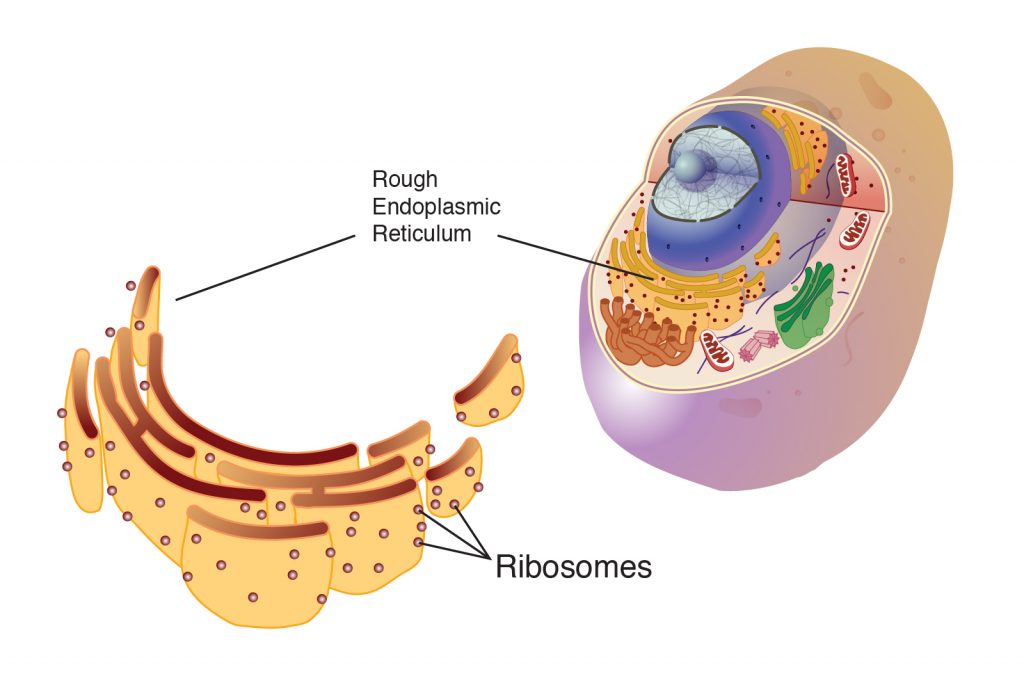The Ribosome is a very component of cells. Cells are the fundamental component of any living organism. So it is not wrong at all to say that every living organism has Ribosomes in its body. That too in millions.
Ribosomes are often considered to be free particles that are present in both cells types. That is in both Eukaryotic and Prokaryotic cells. Also, this particle is also found to be in attachment to the endoplasmic reticulum in the cell.
Discovered by George Emil Palade in 1955. George Emil Palade is a Romanian American-based cell biologist. It was also observed that any time a single cell could store more than 10 million ribosomes. It is also present in Prokaryotic cells in thousands.
Now, depending upon the cell type and the activity of the cell, the size of the ribosomes varies. But the average Ribosomes measure at about 20 nm. If you are wondering, what are these ribosomes made of? Then to answer that, Ribosomes are, in general, made of Ribosomal RNA, also called rRNA. It has one other component, and that is Ribosomal protein.
The interesting fact is that these Ribosomes are, in fact, composed of two subunits. There is a larger subunit and a smaller subunit. These mentioned subunits get measured as per their sedimentation rate.
In general, the large and the small subunits in a eukaryotic cell are in the measurement range of 60S and 40S. While in the prokaryotic cell, the measurement goes up to 30S and 50S for the small and the large ones.
Ribosomes are often considered to be macromolecular machines. The main function of the Ribosomes is to perform the synthesis of biological protein. Other than that, Ribosomes are also known to link amino acids together. Amino acid gets linked in the order which is pre-specified.
Now that we are aware of what Ribosomes are. Let’s take a look at the Ribosome structure.
Structure Of Ribosomes

There are various types and structures of Ribosomes. Some of them are as follows:
Bacterial Ribosomes
Usually sized at about 20 nm in diameter. Bacterial ribosomes are, in fact, composed of 35% of ribosomal proteins and the rest of rRNA. What is to notice is that the ribosomal subunits are similar in the case of both bacteria and eukaryotes. Close to the site that is for the polypeptide, there are no ribosomal proteins.
Bacteria is well known to have 70 ribosomes, including both large and small subunits.
Eukaryotic Ribosomes
If you study the eukaryotic cells, you will find that there are about 80S ribosomes in the cytosol. It is then further subdivided into large 60S and small 40S subunits. The small subunit has a count of 1900 nucleotides and 33 proteins.
Whereas the larger one has three different subunits of 120, 4700, and 160 nucleotides. And with that, it has 46 proteins.
Mitoribosomes and Plastoribosomes
It has been already identified that ribosomes are also present in the mitochondria. And hence they are also called mitoribosomes. It is also found to be present in the plastids and hence are also known as Plastoribosomes.
Like always, the ribosomes here also have small and large subunits. These subunits are bound with proteins. It is often assumed to originate as symbiotic bacteria. And its found that these ribosomes are quite the same as the ribosomes in bacteria.
Archaeal Ribosomes
Like bacterial ribosomes, Archaeal ribosomes have the same dimensions. But if you consider the sequence, it’s found to be somewhat like the Eukaryotic ribosomes.
Functions Of Ribosomes
Like any other part of the cell, ribosomes have their own functions that they have to carry. Below are some of the functions of Ribosomes:
- Through a process of DNA transcription, the DNA produces the mRNA
- Through protein synthesis, ribosomes do the translation of mRNA into protein.
- To carry out normal cellular functions, ribosomes combine amino acids. This happens so that proteins can form.
- The protein that gets synthesized in the cytoplasm gets used in the cytoplasm only.
- The protein that is gets synthesized by the bound ribosomes is then transported. These protein gets transported out of the cell.
FAQs
What is the composition of a Ribosome?
A ribosome is, in general, composed of subunits. These subunits are small subunits and large subunits. The large subunit from chains of amino acids. At the same time, the small subunits create mRNA.
What is the basic function of Ribosomes?
The important function of Ribosomes is to carry out the process of protein synthesis.
How does Protein synthesis help cells function?
Protein is very important for a lot of cell functions like damage repair. Hence protein synthesis is a very important function of the Ribosome.
Final Words
The Ribosome has its function to carry out amongst the other cellular functions. All functions need to happen as they do. And hence Ribosome, like any other part of the cell, is an important component.
That’s all about ribosomes and their functions. Hope it helped.

